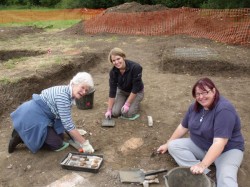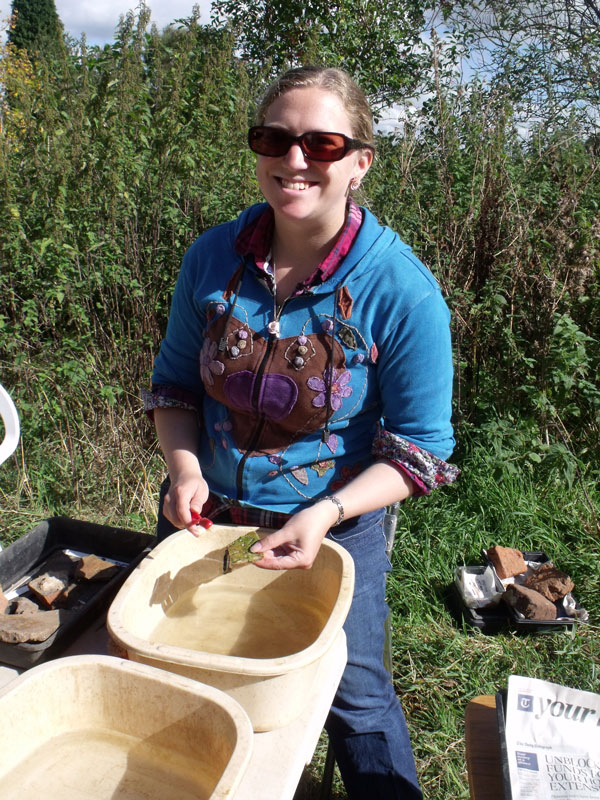Over the months I have thoroughly enjoyed reading my fellow-trainees’ accounts of some of the projects they have undertaken this past year. It goes to show what fascinating stories we can find in our archives. However, in this entry I’m going to break the mould a bit…
Like the other trainees, I have spent a lot of time in the archives exploring topics such as Alan Turing for LGBT History Month, the origins of local place names, and food in Surrey (mock turtle soup, anyone?). But that is only one part of my traineeship at Surrey Heritage.
Based at Surrey History Centre, Surrey Heritage makes up the County Council’s heritage based departments, including the archives, archaeology, learning in heritage, and museums. This means that the traineeship here incorporates not only working in the archive, but some of the other teams as well. I don’t have enough time to describe all the projects I have been involved in during my traineeship, but have decided to pick out a few to describe some of the work I have undertaken outside the archive.
Back in September I stepped out of the archives and into the bright sunlight for an archaeology dig. Every year, Surrey County Archaeology Unit teams up with Surrey Archaeological Society and holds a community dig at Woking Palace. The palace was one of Henry VIII’s favourite homes, where he would go with his friends to hunt and play tennis. Now there is only one complete room left, but every year volunteers and schools are invited to help dig up the site and discover some of the old rooms.

HLF archaeology trainee Hannah with volunteers at the Woking Palace dig
Having done archaeology many years ago, I jumped at the opportunity to help supervise the dig. It was exciting to be back out in the field again. The weather was mixed – some days we were baking in hats and sun cream, others we were playing human Tetris as we all tried to fit into the cabins to avoid the downpours.
I spent most of my time helping the volunteers and school children with their digging. Although I had seen hundreds of Tudor roof tiles and bricks before, their enthusiasm for finding another lump of the orange clay was infectious. One of our more spectacular finds was towards the end of the dig – a 17th century green glazed plate with a leaf pattern. I was pleased to be one of the people given the task of cleaning the artefact.

Me helping the finds team to clean artefacts and enjoying the sun.
Working with the archaeologists was an unforgettable two weeks. I also helped with some school workshops. It was a great experience to get out of the archives and into the fresh air, but I was thankful to return, knowing that it wouldn’t be raining in the archives.
Another foray I took away from the archives for my traineeship was work experience in museums. I visited local museums in Chertsey, Haslemere, Elmbridge and Farnham, where I helped with tasks such as cataloguing accessions and storing items. Each of the museums had their own character, and I was interested to experience how they all worked. It was amazing to see the vast range of items museums have to deal with. Most commonly, documents and social artefacts, but I also found myself handling paintings, archaeological finds, costumes, and even animal bones! Sitting in on a meeting with some staff from a local volunteer-run museum, who wanted to learn the best way to keep stuffed animals, brought home to me how much small museums rely on volunteers, and how lack of funding can endanger the artefacts within.
Overall, this traineeship is a fantastic opportunity for anyone who fancies checking out different paths in a heritage career. All the same, as it draws to a close, the main point I’ve got out of it is that, although museums and archaeology are great, it’s the documents I really enjoy working with, and so I’ve cemented in my mind that archiving is the career for me.